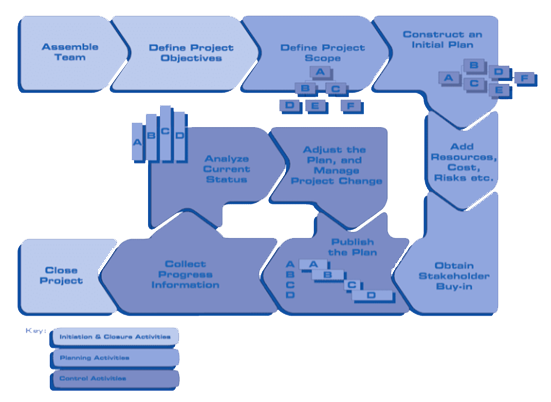Metrics can also be developed to measure project progress in other ways, such as earned
value, or activity float statistics. If the project manager reviews the progress data and
concludes that the project is complete, a phase-exit review will be performed to confirm
that all the objectives have been met before moving into the final closure phase.
Deliverables: Set of progress reports, set of exception reports, metrics report, (phase-
exit review checklist).
Analyze Current Status
By analyzing the progress information received, the project manager will be able to
augment the above reports with information about which areas of the project are of
concern, and where problems are likely to occur in the future. This allows managers to
focus on the important/critical areas of the project.
Deliverables: Project evaluation report(s).
Adjust the Plan, and Manage Project Change
Based on the analysis, and with the support of the project team, the project manager will
make plan adjustments to help reduce risks, accommodate scope changes, or to
compensate for activities that have not occurred on schedule. Once this has happened,
the plan will re-published, and the cycle repeated until the project is complete.
Deliverables: Change request forms, updated plan.
Close Project
When the objectives of the project have been achieved, the project manager will close
down the project. This will involve some financial closure tasks, as well as archiving of
the project materials. A lessons-learned document will be developed to benefit future
projects, and if possible a project team celebration will be held.
Deliverables: Change request forms, updated plan.

